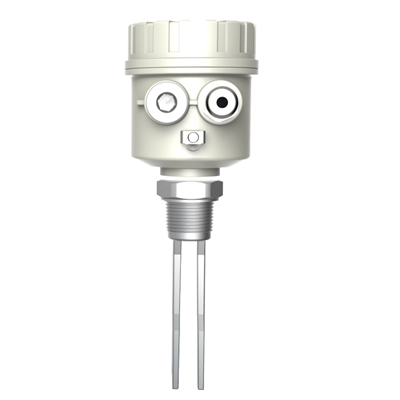


An electronic circuit continuously excites the tuning fork, causing it to mechanically vibrate. When the prongs of the fork contact anything with substantial mass, the resonant frequency of the fork decreases. The circuit detects this frequency change and indicates the presence of mass contacting the fork.

The working principle of the rod type level switch is based on continuously vibrating a mechanical rod at its natural frequency. The working principle of the rod type level switch is the same as the vibrating fork level switch. The only difference is that a vibrating rod kept vibrating instead of tuning fork. A vibrating rod is kept in mechanical vibrations at its resonance frequency by piezo-electric crystals. When the service material covers the rod probe, vibrations are damped which is sense electronically and processed signal is used for switching.

The electrode rod of RF admittance level switch consists of measuring electrode, shielding electrode and grounding electrode. These three kinds of electrodes are isolated by insulating material. When the media touches the measuring electrode the admittance between the measuring electrode and the grounding electrode will increase and the media level changes can be judged by the change of admittance.






